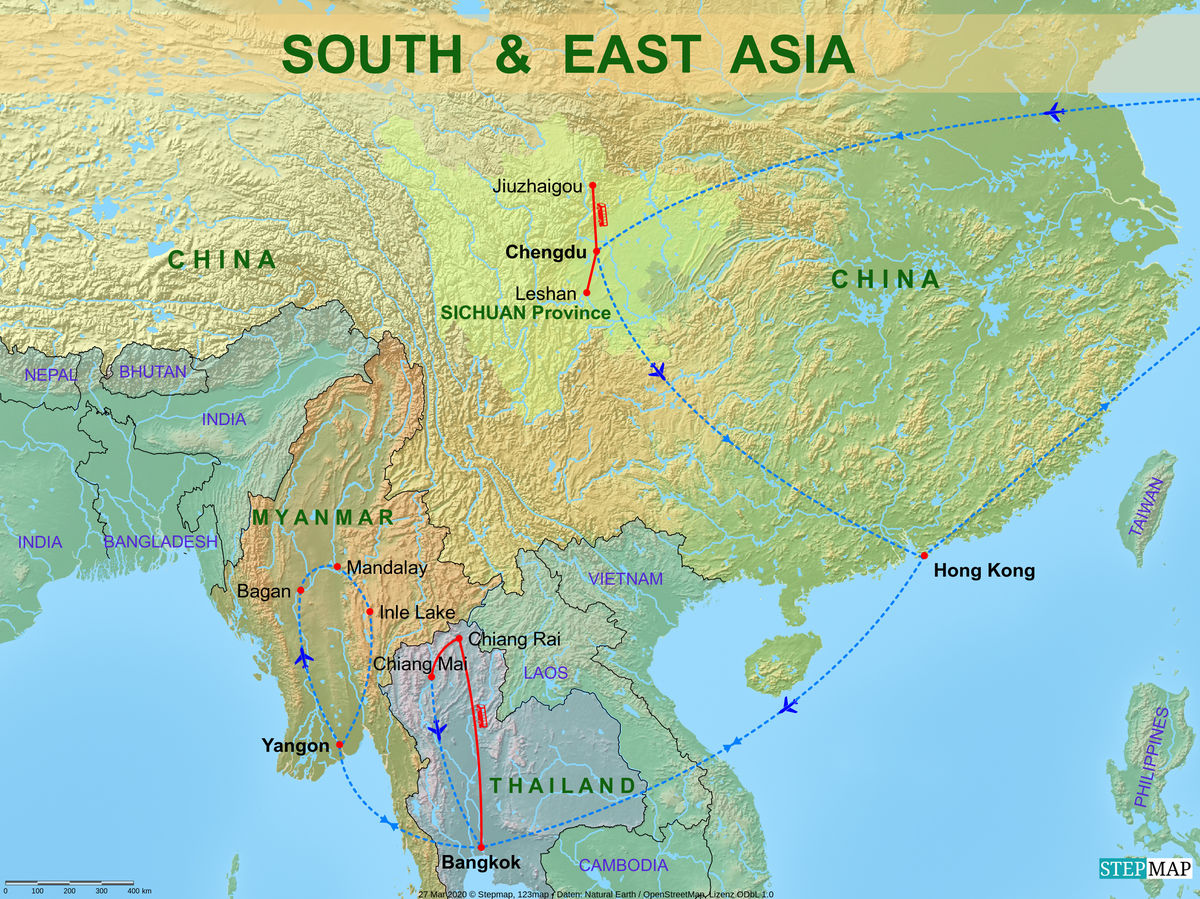S & E Asia 61 - Myanmar(Burma) 01: Yangon(Rangoon) 1 - Intro and first city glimpses
Mar 4, 2022 10:33:12 #
Welcome to the second segment of our epic trip to SOUTH and EAST ASIA. In this segment I will cover our journey through the central part of Myanmar, aka Burma. We basically combined four local country trips together for this long journey. While we joined a large bus tour in Sichuan/China, here in Myanmar we had a private tour just by ourselves, assisted by different local guides in the cities and countryside we visited. - Today I will provide a first overview of this somewhat mysterious country, which has seen much grandeur as well as suffering in its history. This is particularly true recently with its own military dictatorship starting in 1962, which miraculously disappeared in the second decade of this century and then returned with a vengeance just last year in 2021. We were very lucky to visit the country in 2013 when it felt the respite of freedom and democracy and the future looked very promising. In surrounding countries, Myanmar is known as "The Golden Land" and when you fly into cities such as Mandalay and Yangon it is easy to understand why: On the ground you cannot go far without coming across gilded Buddhist temples seen on hilltops, in town centers or the smallest ones tucked at the base of old trees outside people's homes, and most of them are covered in gold. - Here is the condensed write-up from Wikipedia, augmented by other sources:
MYANMAR (formerly Burma) is a Southeast Asian nation of more than 100 ethnic groups, bordering India, Bangladesh, China, Laos and Thailand. Yangon (formerly Rangoon), the country's largest city and its capital city until it was replaced by Naypyidaw in 2005, is home to bustling markets, numerous parks and lakes, as well as the towering, gilded Shwedagon Pagoda, which contains Buddhist relics and dates to the 6th century.
Myanmar's history is long and convoluted, I will touch upon it selectively in greater depth when presenting some of the places we visited.
Archaeological evidence shows that Homo erectus lived in the region now known as Myanmar as early as 750,000 years ago. The first evidence of Homo sapiens is dated to about 25,000 BCE with discoveries of stone tools in central Myanmar. Evidence of Neolithic age domestication of plants and animals and the use of polished stone tools dating to sometime between 10,000 and 6,000 BCE has been discovered in the form of cave paintings in the Padah-Lin Caves.
The Bronze Age arrived ~ 1500 BCE when people in the region were turning copper into bronze, growing rice and domesticating poultry and pigs; they were among the first people in the world to do so. The Iron Age began around 500 BCE with the emergence of iron-working settlements near Mandalay. There were also rice-growing settlements that traded with their surroundings as far as China between 500 BCE and 200 CE. These cultures also had influences from outside sources such as India and Thailand, indicating some form of communication through trade between groups in Myanmar and other places.
Around the second century BCE the first-known city-states emerged in central Myanmar, founded as part of a migration from present-day Yunnan by the Tibeto-Burman-speaking Pyu people. Theirculture was heavily influenced by trade with India, importing Buddhism as well as other cultural, architectural and political concepts. By the 9th century, several city-states had sprouted across the land: the Pyu in the central dry zone, Mon along the southern coastline and Arakanese along the western littoral. In the mid-to-late 9th century the Bamar people founded a small settlement at Bagan. It was one of several competing city-states until the late 10th century, when it grew in authority and grandeur. Following the establishment of the Pagan (now known as Bagan) Kingdom in the 1050s, the Burmese language, culture, and Theravada Buddhism slowly became dominant in the country. The Pagan Kingdom fell to Mongol invasions, and several warring states emerged. In the 16th century, the country became for a short period the largest empire in the history of Southeast Asia.
The early 19th-century Konbaung dynasty ruled over an area that included modern Myanmar and briefly controlled Manipur and Assam in today's India as well. The British East India Company seized control of the administration of Myanmar after three Anglo-Burmese Wars in the 19th century, and the country became a British colony. After a brief Japanese occupation during WW2, Myanmar was reconquered by the Allies and gained independence in 1948. Following a coup d'état in 1962, it became a military dictatorship under the Burma Socialist Program Party.
For most of its independent years, the country has been engrossed in ethnic strife and its myriad ethnic groups have been involved in one of the world's longest-running ongoing civil wars. In 2011, the military junta was officially dissolved following a 2010 general election, and a nominally civilian government was installed. This, along with the release of Aung San Suu Kyi and successful elections in 2015, improved the country's human rights record and foreign relations and led to the easing of trade and other economic sanctions, although the country's treatment of its ethnic minorities, particularly in connection with the Rohingya conflict, continued to be condemned.
Following the 2020 Myanmar general election, in which Aung San Suu Kyi's party won a clear majority in both houses, the Burmese military again seized power in a coup d'état on February 1, 2021. The coup, which was widely condemned, led to widespread protests in Myanmar and has been marked by a violent response by the military. The military also arrested Aung San Suu Kyi and charged her with crimes ranging from corruption to the violation of Covid protocols, all of which have been labeled "politically motivated" by independent observers.
Myanmar is a member of ASEAN, but it is not a member of the Commonwealth of Nations despite once being part of the British Empire. It is a country rich in jade and gems, oil, natural gas, and other mineral resources. Myanmar is also endowed with renewable energy; it has the highest solar power potential compared to other countries of the Great Mekong Subregion. The income gap in Myanmar is among the widest in the world, as a large proportion of the economy is controlled by supporters of the military government. As of 2020, according to the Human Development Index, Myanmar ranks 147 out of 189 countries in human development.
--------------------------------------------------------------------------------------------------------------------------------
In this introductory set I present my customary title page indicating the areas of Myanmar this travelogue will cover plus a map of the country showing these places and our travel route. Then we start our tour by taking a rickety, almost antediluvian looking train from the periphery where our hotel was located into the center of Yangon alongside the Yangon River. Here we visit some of its major colonial era buildings, as well as the historic Sule pagoda.
Notes
TRIP INFO: Set # 1 provides a brief introduction to THIS SERIES on SOUTH & EAST ASIA. See it at
https://www.uglyhedgehog.com/t-724330-1.html
EARLIER POSTS of this series: Access my topic list at UHH, the new posts are listed in reverse chronological order:
https://www.uglyhedgehog.com/user-topic-list?usernum=45105
Thanks for visiting, I recommend viewing the downloads and look forward to your comments and questions.
.
MYANMAR (formerly Burma) is a Southeast Asian nation of more than 100 ethnic groups, bordering India, Bangladesh, China, Laos and Thailand. Yangon (formerly Rangoon), the country's largest city and its capital city until it was replaced by Naypyidaw in 2005, is home to bustling markets, numerous parks and lakes, as well as the towering, gilded Shwedagon Pagoda, which contains Buddhist relics and dates to the 6th century.
Myanmar's history is long and convoluted, I will touch upon it selectively in greater depth when presenting some of the places we visited.
Archaeological evidence shows that Homo erectus lived in the region now known as Myanmar as early as 750,000 years ago. The first evidence of Homo sapiens is dated to about 25,000 BCE with discoveries of stone tools in central Myanmar. Evidence of Neolithic age domestication of plants and animals and the use of polished stone tools dating to sometime between 10,000 and 6,000 BCE has been discovered in the form of cave paintings in the Padah-Lin Caves.
The Bronze Age arrived ~ 1500 BCE when people in the region were turning copper into bronze, growing rice and domesticating poultry and pigs; they were among the first people in the world to do so. The Iron Age began around 500 BCE with the emergence of iron-working settlements near Mandalay. There were also rice-growing settlements that traded with their surroundings as far as China between 500 BCE and 200 CE. These cultures also had influences from outside sources such as India and Thailand, indicating some form of communication through trade between groups in Myanmar and other places.
Around the second century BCE the first-known city-states emerged in central Myanmar, founded as part of a migration from present-day Yunnan by the Tibeto-Burman-speaking Pyu people. Theirculture was heavily influenced by trade with India, importing Buddhism as well as other cultural, architectural and political concepts. By the 9th century, several city-states had sprouted across the land: the Pyu in the central dry zone, Mon along the southern coastline and Arakanese along the western littoral. In the mid-to-late 9th century the Bamar people founded a small settlement at Bagan. It was one of several competing city-states until the late 10th century, when it grew in authority and grandeur. Following the establishment of the Pagan (now known as Bagan) Kingdom in the 1050s, the Burmese language, culture, and Theravada Buddhism slowly became dominant in the country. The Pagan Kingdom fell to Mongol invasions, and several warring states emerged. In the 16th century, the country became for a short period the largest empire in the history of Southeast Asia.
The early 19th-century Konbaung dynasty ruled over an area that included modern Myanmar and briefly controlled Manipur and Assam in today's India as well. The British East India Company seized control of the administration of Myanmar after three Anglo-Burmese Wars in the 19th century, and the country became a British colony. After a brief Japanese occupation during WW2, Myanmar was reconquered by the Allies and gained independence in 1948. Following a coup d'état in 1962, it became a military dictatorship under the Burma Socialist Program Party.
For most of its independent years, the country has been engrossed in ethnic strife and its myriad ethnic groups have been involved in one of the world's longest-running ongoing civil wars. In 2011, the military junta was officially dissolved following a 2010 general election, and a nominally civilian government was installed. This, along with the release of Aung San Suu Kyi and successful elections in 2015, improved the country's human rights record and foreign relations and led to the easing of trade and other economic sanctions, although the country's treatment of its ethnic minorities, particularly in connection with the Rohingya conflict, continued to be condemned.
Following the 2020 Myanmar general election, in which Aung San Suu Kyi's party won a clear majority in both houses, the Burmese military again seized power in a coup d'état on February 1, 2021. The coup, which was widely condemned, led to widespread protests in Myanmar and has been marked by a violent response by the military. The military also arrested Aung San Suu Kyi and charged her with crimes ranging from corruption to the violation of Covid protocols, all of which have been labeled "politically motivated" by independent observers.
Myanmar is a member of ASEAN, but it is not a member of the Commonwealth of Nations despite once being part of the British Empire. It is a country rich in jade and gems, oil, natural gas, and other mineral resources. Myanmar is also endowed with renewable energy; it has the highest solar power potential compared to other countries of the Great Mekong Subregion. The income gap in Myanmar is among the widest in the world, as a large proportion of the economy is controlled by supporters of the military government. As of 2020, according to the Human Development Index, Myanmar ranks 147 out of 189 countries in human development.
--------------------------------------------------------------------------------------------------------------------------------
In this introductory set I present my customary title page indicating the areas of Myanmar this travelogue will cover plus a map of the country showing these places and our travel route. Then we start our tour by taking a rickety, almost antediluvian looking train from the periphery where our hotel was located into the center of Yangon alongside the Yangon River. Here we visit some of its major colonial era buildings, as well as the historic Sule pagoda.
Notes
TRIP INFO: Set # 1 provides a brief introduction to THIS SERIES on SOUTH & EAST ASIA. See it at
https://www.uglyhedgehog.com/t-724330-1.html
EARLIER POSTS of this series: Access my topic list at UHH, the new posts are listed in reverse chronological order:
https://www.uglyhedgehog.com/user-topic-list?usernum=45105
Thanks for visiting, I recommend viewing the downloads and look forward to your comments and questions.
.
1 - Title page for the Myanmar segment of our trip showing the 4 major locations we will visit, set on an image of a "Golden Sunset" coloring the sky in Mandalay; Mingalaba is a common Burmese impression meaning "Hello", literally "It is a Blessing"
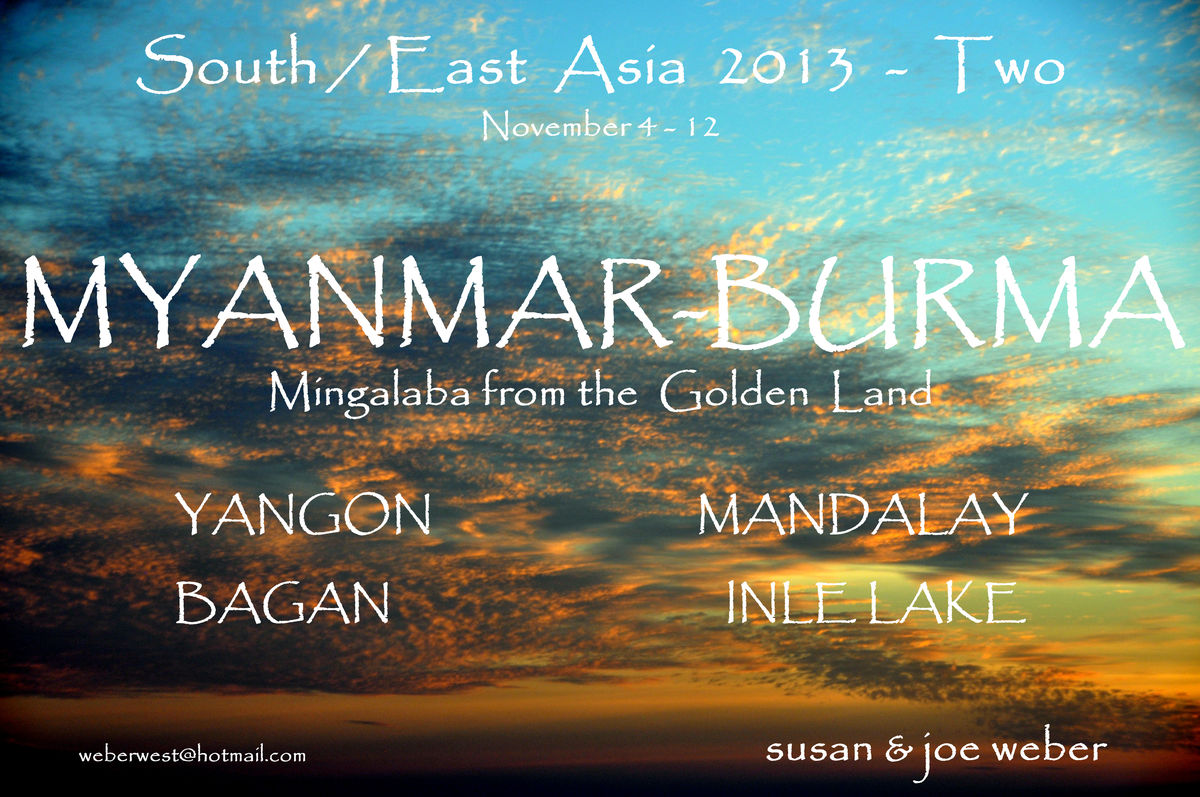
(Download)
2 - Map of our itinerary in Myanmar: After visiting Yangon, we move to the archaeological zone of Bagan, then the great city Mandalay in the north, followed by excursions on and around the lovely Inle Lake in the center of the country
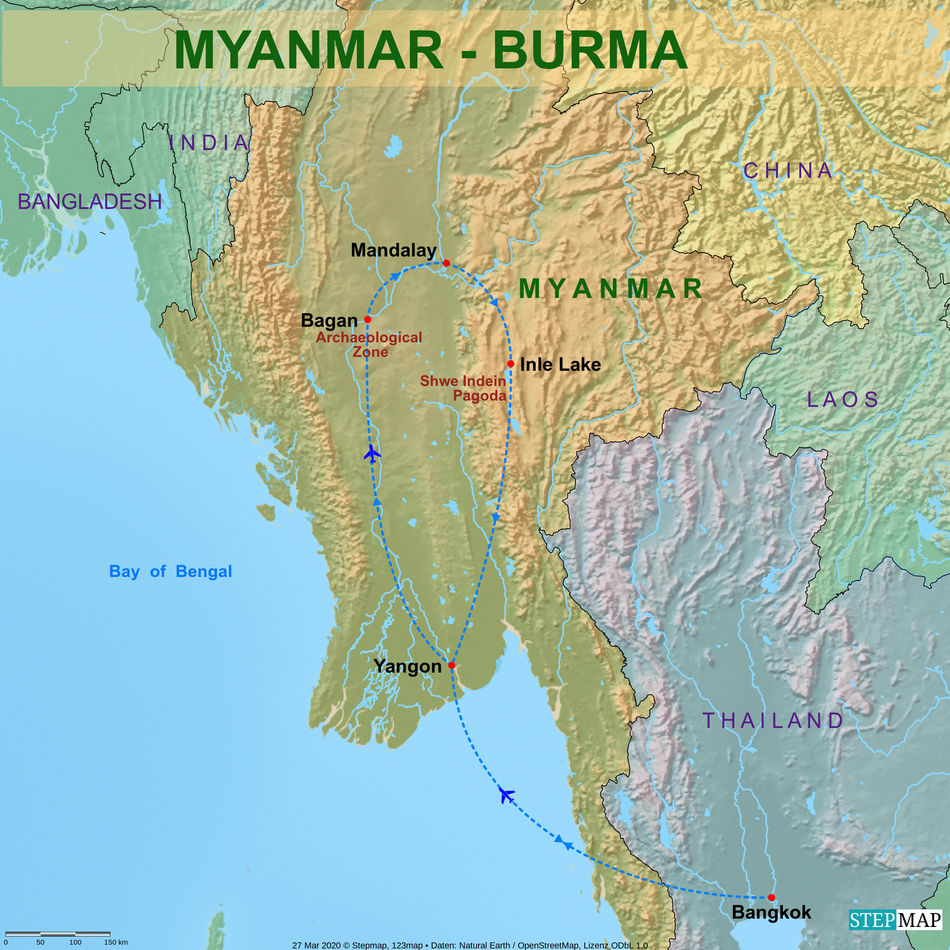
(Download)
3 - Starting out with the country's largest city and long-time capital: Yangon (Rangoon) - here the Shwedagon Pagoda
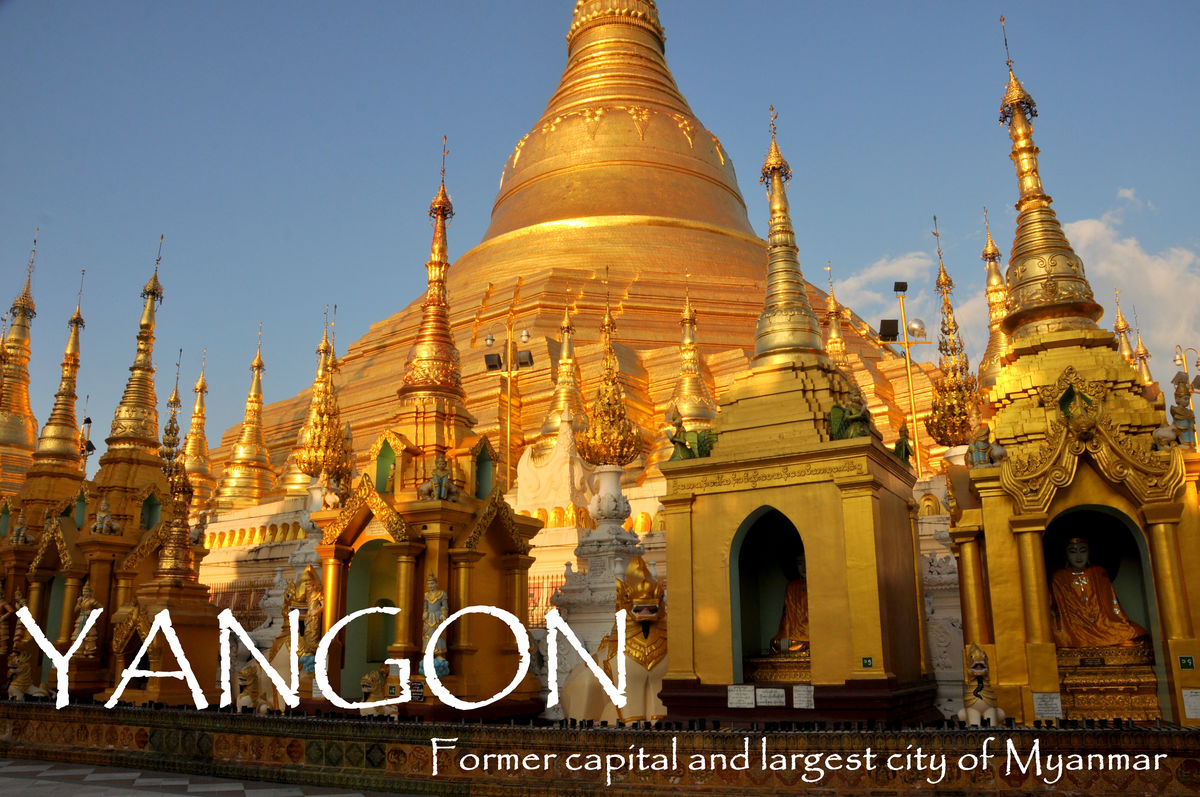
(Download)
4 - Our first trip into the city: To get acclimatized to the life in this town, we took our first ride into the city center on this rickety old passenger train, take note of the condtions of these buckling rail tracks, but hey: It still works
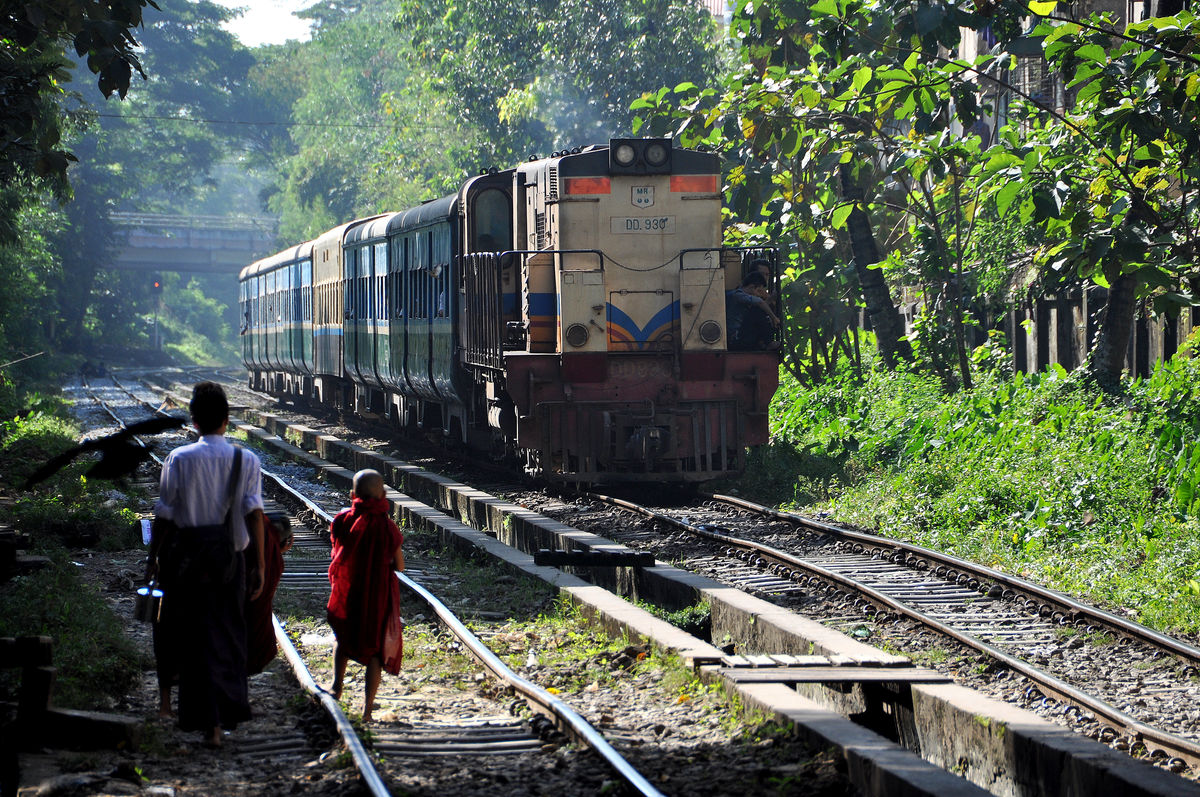
(Download)
5 - Street scene taken from a pedestrian bridge over Maha Bandula road, a major thorougfare and shopping road named after the famed king Maha Bandula, with the ornate clock tower at left and the Sule pagoda at the rear
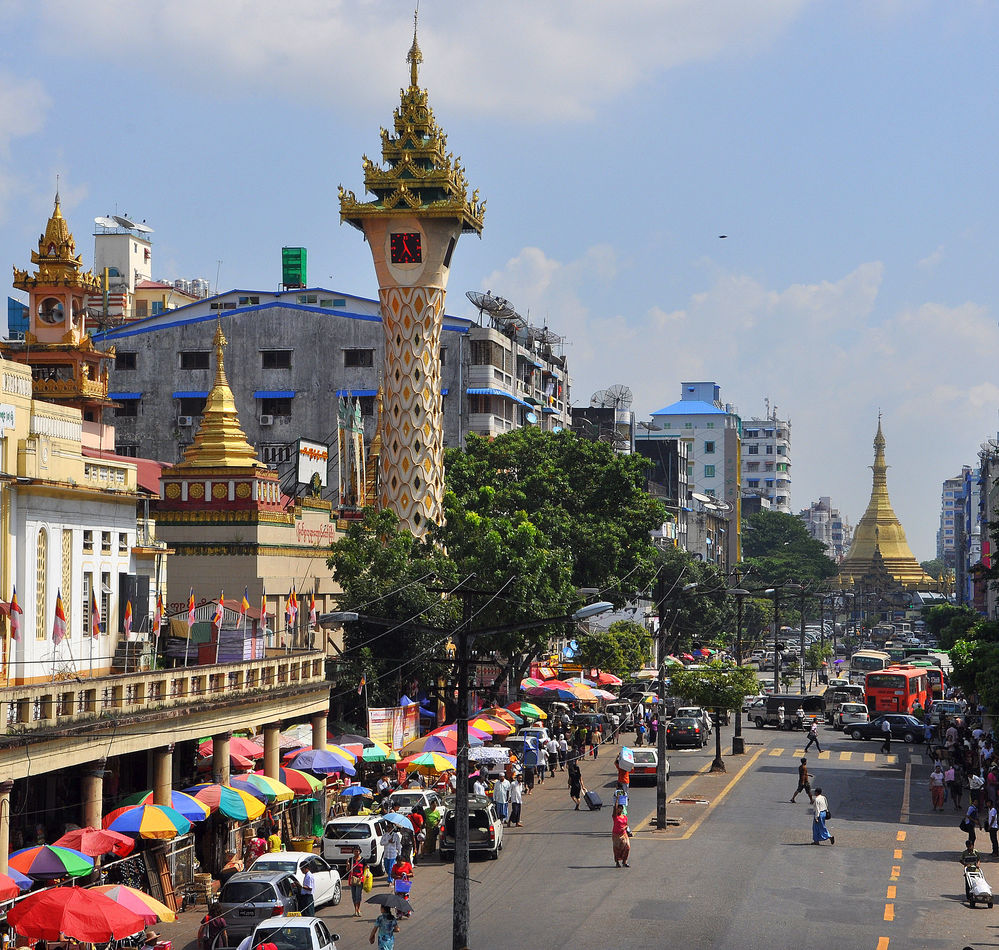
(Download)
6 - Yangon City Hall, just north of the Maha Bandula Park and adjacent to the Sule Pagoda
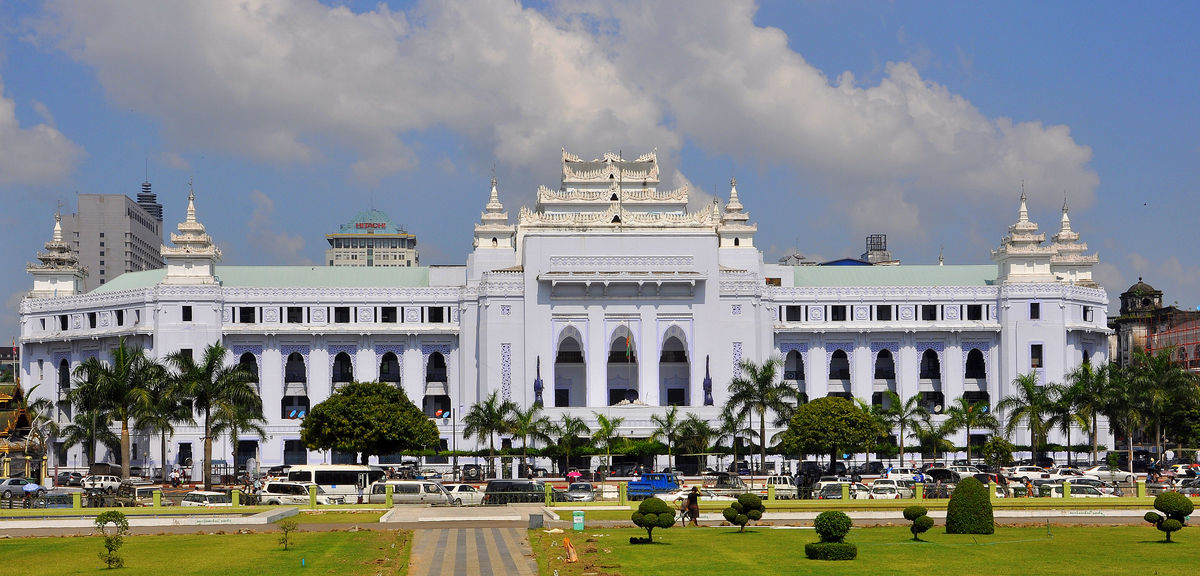
(Download)
7 - High Court building with imposing clock tower built in 1905-11, overlooking the Maha Bandula Park
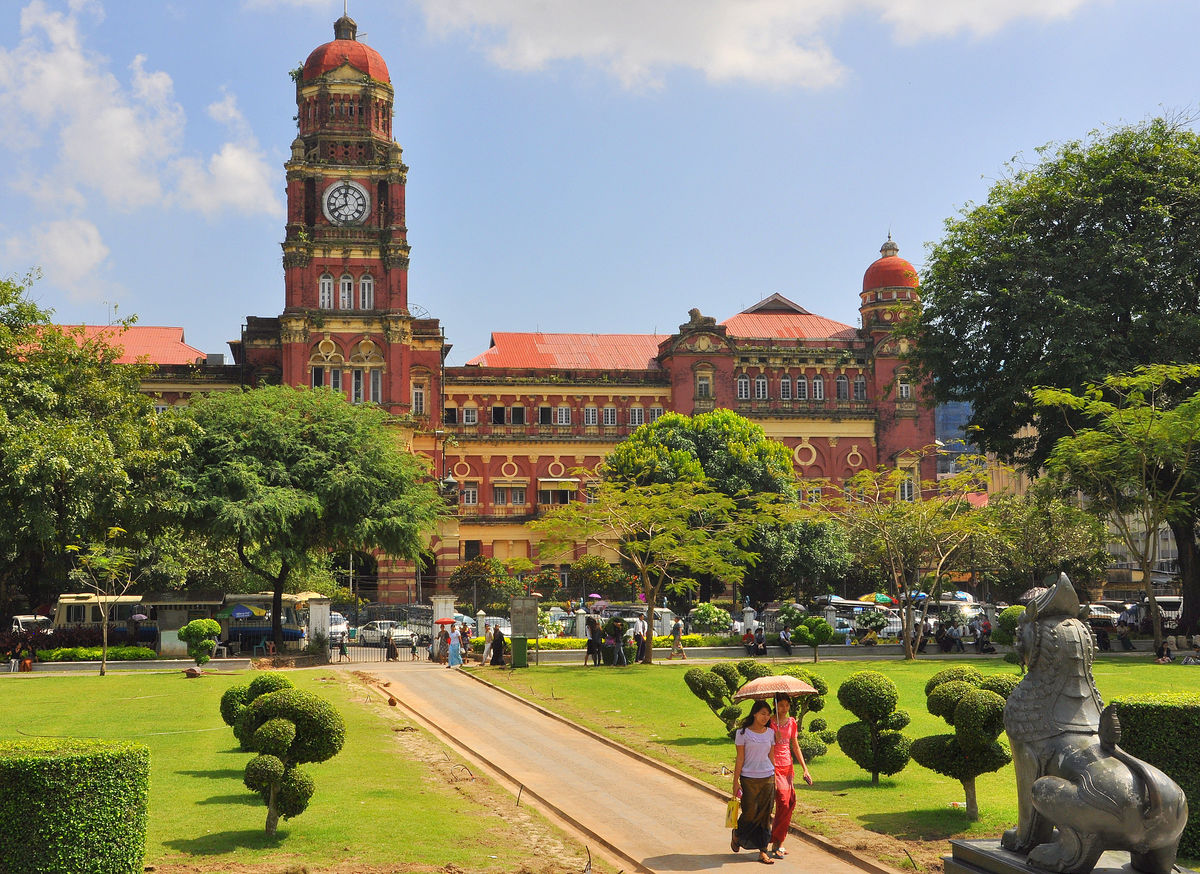
(Download)
8 - Colonial building in downtown
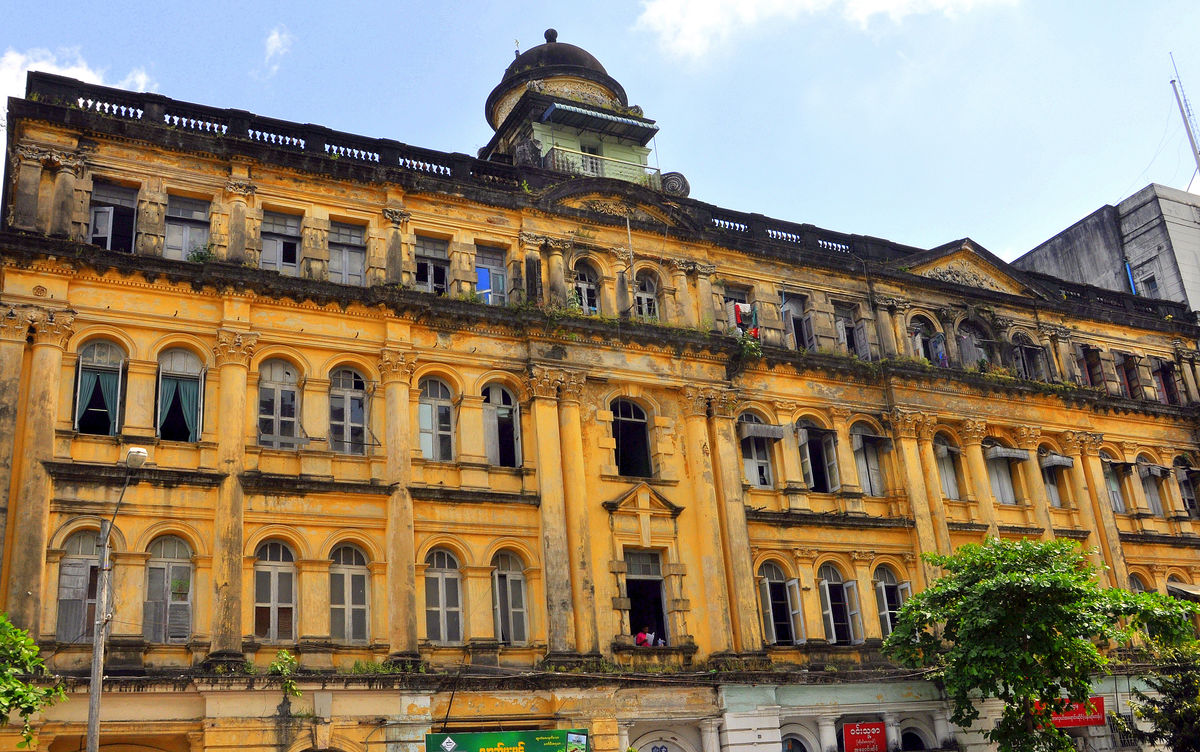
(Download)
9 - Sule Pagoda located in the heart of downtown Yangon, built according to legend over 2500 years ago during the time of the Buddha, in modern times a rallying point for local uprisings
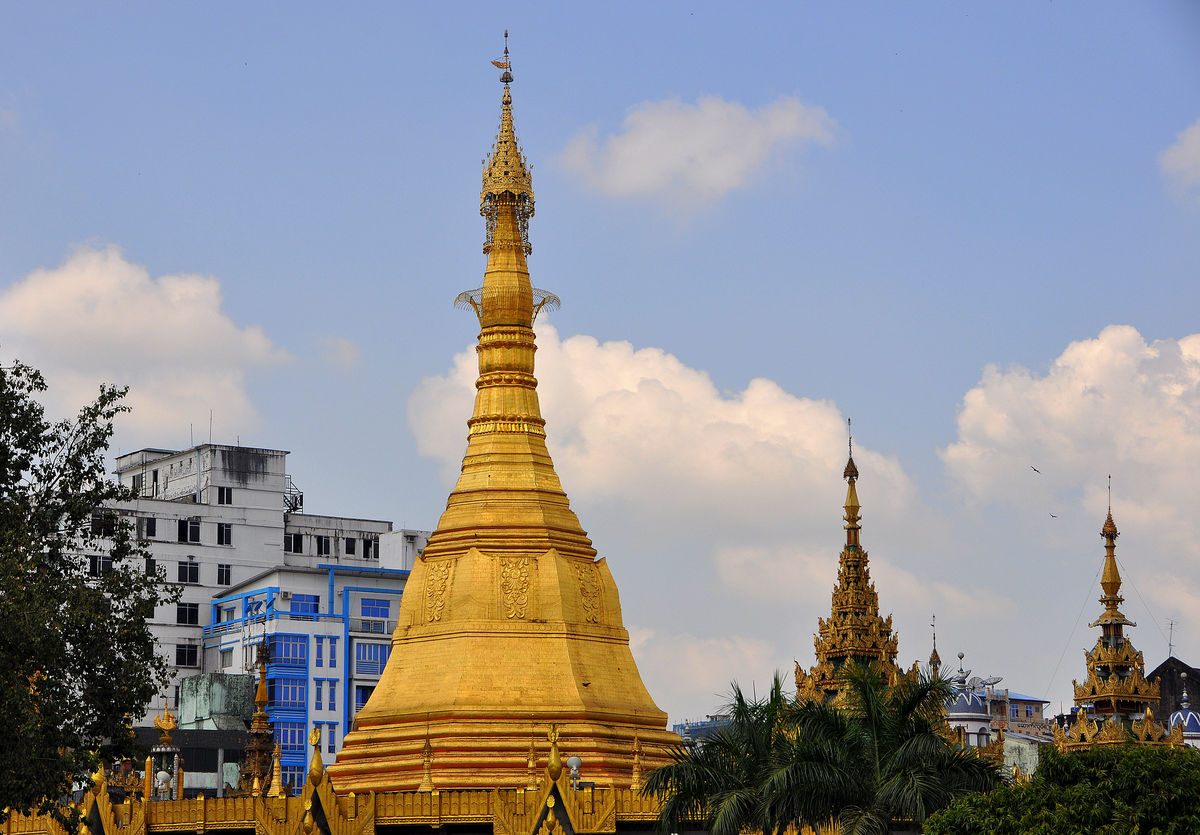
(Download)
10 - A closer take of the top of the Sule Pagoda
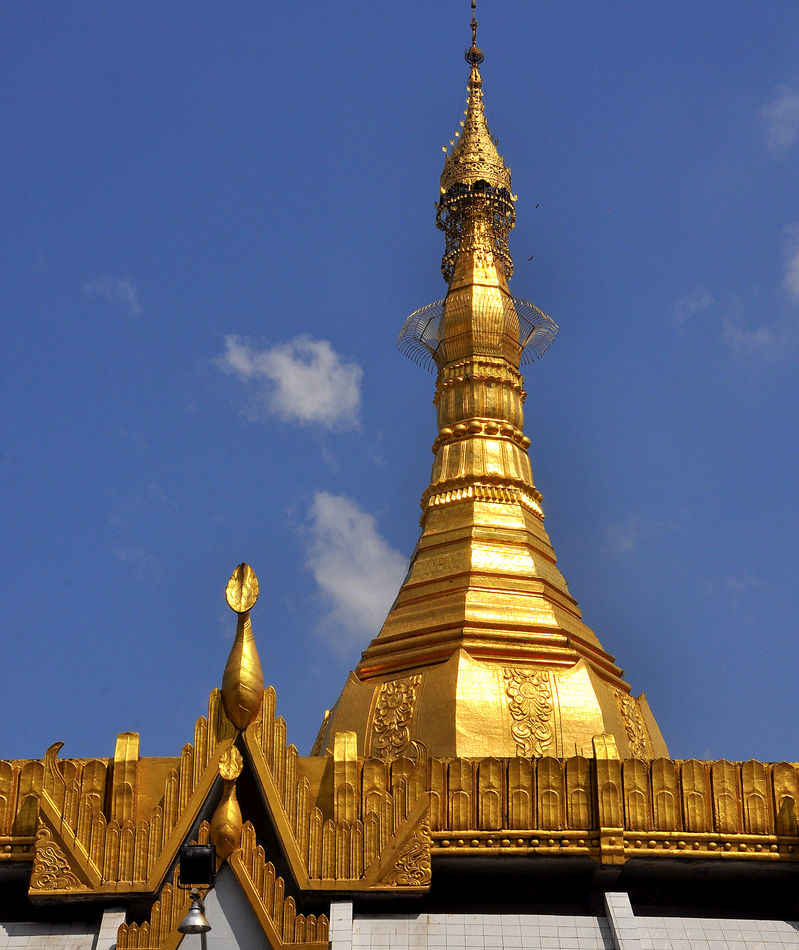
(Download)
Mar 4, 2022 10:34:18 #
A map of our overall trip to help you slot in where Myanmar is in South East Asia and how we got there
Mar 4, 2022 10:38:29 #
Mar 4, 2022 11:17:18 #
Mar 4, 2022 11:21:25 #
Mar 4, 2022 11:21:54 #
NMGal wrote:
This is gonna be good!
Thanks Barbara, I hope you are going to like this new location!
Mar 4, 2022 12:37:06 #
weberwest wrote:
Welcome to the second segment of our epic trip to ... (show quote)
Beautiful and breathtaking 💫💫💫💫💫
Mar 4, 2022 12:53:44 #
weberwest wrote:
Welcome to the second segment of our epic trip to ... (show quote)
I like the clock tower in 5.
Mar 4, 2022 12:56:06 #
joecichjr wrote:
Beautiful and breathtaking 💫💫💫💫💫
Thank you Joe, yes we are in a new, colorful country with plenty of interesting things to discover.
Mar 4, 2022 12:57:01 #
photophile wrote:
I like the clock tower in 5.
Thank you Karin, yes that clocktower is rather unusual, but quite representative of this area in South-East Asia.
Mar 5, 2022 05:30:53 #
Mar 5, 2022 07:06:44 #
Mar 5, 2022 08:07:06 #
Mar 5, 2022 09:05:01 #
I, as well, was taken aback by the clock tower in #5. Very interesting and stunning architecture. Glad the train stayed on the track!!!
Mar 5, 2022 10:47:19 #
If you want to reply, then register here. Registration is free and your account is created instantly, so you can post right away.

